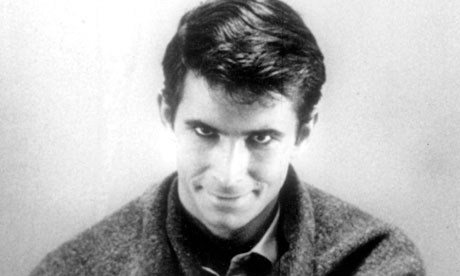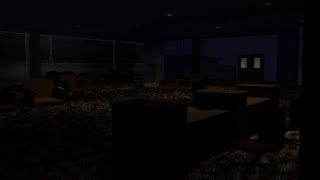Name: Eric Grey
Age: 37
Height: 5' 7"
Job: Aerospace engineer
Calm, patient and timid. Working as an Aerospace engineer, his intelligence and co-operation among the team have him as a highly regarded colleague. Bullied for his intelligence and shyness, which made it hard for him to socialise, he has been coined as a "push over". He wants to turn that all around.
Sunday, 26 February 2012
Character Profile 1 - Rocket Scientist
Name: Donny Ellsworth
Age: 27
Height: 5' 10"
Job: Rocket Scientist (Aerospace engineer)
Arrogant, ambitious and cocky. Donny works as an Aerospace engineer. His vast intellect and knowledge lead him to one of the most challenging fields. At the top of all of his classes, he grew arrogant and cocky. His attitude has left him alone, with a cynical attitude towards others. His demeaning view of others has made him crave for a new challenge.
*Note: Reminds me a little of The Italian Job (1969) with Charlie Croker at the top of his game, presented with a new challenge, one of his hardest yet. He limits his group to a "no violence" option creating the level of difficulty and at the end, the money is left balancing with the gang inside the bus.
Age: 27
Height: 5' 10"
Job: Rocket Scientist (Aerospace engineer)
Arrogant, ambitious and cocky. Donny works as an Aerospace engineer. His vast intellect and knowledge lead him to one of the most challenging fields. At the top of all of his classes, he grew arrogant and cocky. His attitude has left him alone, with a cynical attitude towards others. His demeaning view of others has made him crave for a new challenge.
*Note: Reminds me a little of The Italian Job (1969) with Charlie Croker at the top of his game, presented with a new challenge, one of his hardest yet. He limits his group to a "no violence" option creating the level of difficulty and at the end, the money is left balancing with the gang inside the bus.
Bouncing/Bowling Ball
Edit: I have no idea why it is so discoloured. May be an issue with the upload.
Wednesday, 22 February 2012
Psycho Review
.jpg/215px-Psycho_(1960).jpg) |
| Fig.1. Psycho poster |
 |
| Fig.2. One of the most iconic murder scenes |
After a suspense packed sequence in which she is tailed by the law, she runs into a small motel, a motel that is Hitchcock's chosen destination in which the rest of the story will unfold. Creating one of the most iconic horror scenes of all time Hitchcock does what he does best and hands out the information that is needed to hold the suspense in the upcoming moments, that by no means halt the progression of suspense.
Hitchcock spared no expense at throwing in tension, horror and mystery into this film. With quick edits, overhead camera shots and long pausing sequences, Psycho is varied in it's delivery, but gives the same thrilling results. David Jenkins pointed out that "it was the first movie to show a toilet flushing, so we might also credit it with spawning the entire gross-out genre" (Jenkins, 2010), though however childish it may seem now, but was deemed "too disgusting" to show.
 |
| Fig.3. Psycho(logically deranged) |
Illustrations
Figure.1 Alfred Hitchcock (1960) Psycho poster. At: http://upload.wikimedia.org/wikipedia/en/thumb/b/b9/Psycho_(1960).jpg/215px-Psycho_(1960).jpg
Figure.2 Alfred Hitchcock (1960) One of the most iconic murder scenes. At: http://www.weeatfilms.com/wp-content/uploads/2012/01/1960-PSYCHO-0011.jpeg
Figure.3 Alfred Hitchcock (1960) Psycho(logically deranged). At: http://static.guim.co.uk/sys-images/Film/Pix/pictures/2010/10/21/1287675746424/Anthony-Perkins-in-Psycho-005.jpg
Bibliography
Peter Bradshaw (2010) Guardian. At: http://www.guardian.co.uk/film/2010/apr/01/psycho-review
David Jenkins (2010) Time Out. At: http://www.timeout.com/film/reviews/71535/psycho.html
R.L. Shaffer (2010) IGN. At: http://uk.bluray.ign.com/articles/112/1129323p1.html
Saturday, 11 February 2012
Rope Review
 |
| Fig.1. Rope poster |
 |
| Fig.2. Uneasy Philip and over-confident Brandon |
Whilst the situations evolve around the murder of their 'friend', the goal later becomes to include their old housemaster into their plans due to this 'inferior' and 'superior' mentality. It is the same idea that inspired the murder in the first instance. One that had originated from the housemaster himself, though he never saw the flawed logic until it was put in practise by Brandon. This film, as Dennis Schwartz said, "dallies around arguments about Nietzschean philosophy, his "Superman" theory, in order to take down that elitist belief as possibly being used in the wrong way to justify criminal acts" (Schwartz, 2008).
 |
| Fig.3. Publisher, James Stewart interrogating the two boys |
Hitchcock tested himself and, as Emanuel Levy said, "his medium by working in tough, confined spaces, as was evident in 'Lifeboat,' set entirely in a lifeboat" (Levy, 2005). He restricted himself to a single room, with minimal editing with the cleverly cut shots occurring in dark scenes or behind someone, to dispel the thought of a short lifespan of the film reels. The long shots convey a sense of real time, and that there is a continuous and constant threat of tension.
A masterpiece that did not follow the traditions of editing and is complimented for such thing, Rope creates tension and suspense the moment it begins and successfully maintains it throughout. Cleaver witty lines and quality star acting are the icing on the cake for this classic.
Illustrations
Figure 1. Alfred Hitchcock (1948) Rope Poster. At: http://upload.wikimedia.org/wikipedia/en/8/8e/Rope2.jpg
Figure 2. Alfred Hitchcock (1948) Uneasy Philip and over-confident Brandon. At: http://www.moviereleses.com/images/cache/screen_image_332722.jpg
Figure 3. Alfred Hitchcock (1948) Publisher, James Stewart interrogating the two boys. At: http://cdn.mos.totalfilm.com/images/r/rope-1948--02-645-75.jpg
Bibliography
Bosley Crowther (2000) New York Times. At: http://www.nytimes.com/library/film/081748hitch-rope-review.html
Dennis Schwartz (2008) Ozus' World Movie Reviews. At: http://homepages.sover.net/~ozus/rope.htm
Emanuel Levy (2005) Emanuel Levy Cinema 24/7. At: http://www.emanuellevy.com/review/rope-4/
Tuesday, 7 February 2012
Unit 4 - Storytelling
For this unit I have: Environment - Desert Island
Character - Rocket Scientist
Prop - Roller Skates
I have a few initial ideas for possible scenarios;
Similar to the introduction of Lost (TV series)
In Lost, a plane containing over 300 people crashes on a desert island. The survivors must then try to escape the island, encountering abnormalities along the way.
My character, the Rocket Scientist, could be a passenger of a either plane (passenger) or a space shuttle (observer/overseer) and has crash landed onto the desert island. Being the only survivor of the crash, he salvages the crash in an attempt to escape from the island. Among the crash site, he finds a pair of roller skates. These roller skates belonged to his son who, was either was on the plane or is back home and initiates the tension through the "ticking clock".
On the basis of his son being on the plane, he struggles to cope with his son's passing. This, however leads to the irrelevance of the father's occupation. Though, to counter that, the Rocket Scientist, created a space shuttle and took his son, including crew, for a journey that no more than a hand full of people will ever witness. The scientist holds that regret, and builds a memorial for son, placing his son's roller skates at the site. The story would be told through flashbacks, jumping from present to past. A possible, very dark and gloomy way to end this particular idea, would be similar to that of a scene in CSI: New York.
In the scene, a teenager who had committed murder, un-knowing and un-willing, killed himself upon finding out the truth. He believed it was his father that killed them, and upon hearing the truth from his father's friend, the teenager drove to the beach. Having sat and stared at the empty sea, he stood up, took off his shoes and began to walk slowly into the sea. The guilt was too much for him to bear, thus relating back to my idea. Though, in addition to the roller skates, a toy rocket would be at the memorial too.
On a brighter note, with the basis of his son at home, the scientist devises of a way at getting back home. With a bit of comedy to this telling, the scientist attempts to build rafts, boats, S.O.S signs, catapults, slingshots, digging tunnels and to no avail has either worked. Through searching the island for an idea, he stumbles upon a pair of roller skates. He then took them back to his makeshift office, consisting of branches, vines and logs, to devise his next idea. His idea was to take the necessary components, to make a pair of rocket powered skates, similar to that of Dead Rising 2's workbench combo system, that would take him home.
Of the ideas, I'm more compelled to the first as I prefer a more mature story, than a comic one.
Thursday, 2 February 2012
Subscribe to:
Comments (Atom)












































